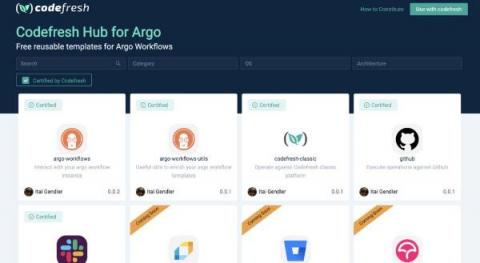Using Codefresh Workflows for GitOps deployments
One of the major components of the Codefresh Software Delivery Platform is the Workflows capability that allows you to define any kind of software process for creating artifacts, running unit tests, running security scans, and all other actions that are typically used in Continuous Integration (CI). At first glance, Codefresh Workflows might look like the typical pipelines that you would find in any popular CI product but if you look under the hood you will realize looks can be deceiving.










